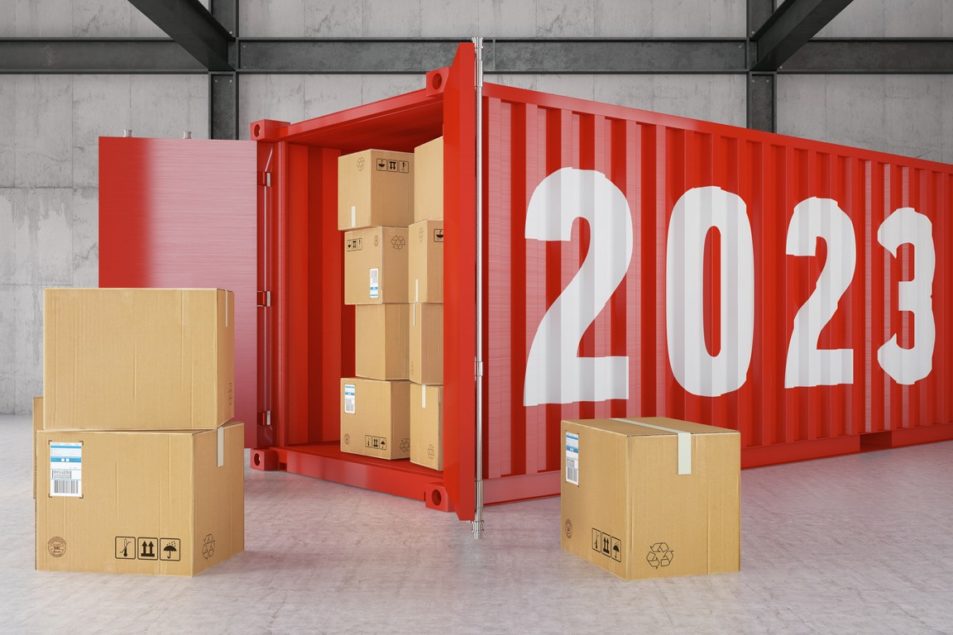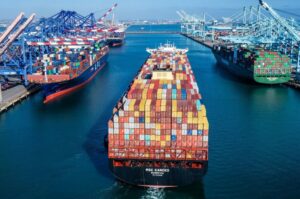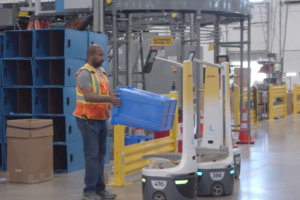
This coming year promises to be one where we adapt to the hard facts brought to light during the last one.
It’s hard to pick the most arresting supply chain headline of 2022. Self-driving trucks are dead. At-home drone deliveries are not going to proliferate. Globalization of trade is in reverse, while globalization of disease is back in first gear. Just-in-time fulfillment turned out to be a shibboleth. Unionization is back in the news; strikes by transportation workers and in other, more white-collar, industries are spreading. Electric vehicles turn out to have intractable moral and logistical issues that make them a lot less “green” than we hoped. Decentralized, ungoverned crypto currency is an invitation to fraud. All technologies, including the ones companies rely on to manage their financial and physical supply chains, are eminently hackable. Developed nations are capable of invading their neighbors like it’s 1939. Even free shipping on retail returns is looking decidedly dicey.
It's not all bad news, though. The pandemic brought supply chain management into the mainstream consciousness in a way it’s never been before. Public pressure is translating into government regulation and corporate efforts to eradicate the worst of the dirty practices that have dogged the business of dispersed sourcing and manufacturing, including child labor and slavery. Despite the hardships and distractions of the last 33 months, momentum towards a more sustainable, equable and cleaner industry continues to build.
As a result, logistics management technology and logistics service provider firms have become attractive targets for venture capital to a greater degree than in decades. Much good will come of hastening innovation there. And supply chain managers are getting a lot more love at the board table. They’ve come a long way; when I first started writing about this business, back in the 90s, our industry was effectively the “cupboard under the stairs” — just a cost center, a necessary but grubby and boring function of doing business, to be ignored and demeaned.
Now, I’m tempted to recall Julia Roberts in the movie “Pretty Woman,” when, loaded with shopping bags, she revisits a Rodeo Drive store that earlier demeaned her as not looking wealthy or important enough to be a customer. Big Mistake. Big. Huge!
So, whatever else the new normal brings, supply chain operations will continue to be in the spotlight, for better or worse. This means more than forming a well-crafted response when someone at a party asks you – at last! – what you actually DO. It also means taking careful stock of the fact that your field of expertise has extraordinary resources at its disposal, and there will be increasingly high expectations of what you do with them.
While you digest all of this, here’s one intriguing statistics to mull. The return rate on retail goods for 2022 is expected to be 16.5%, or a total of $816 billion, peaking at closer to 18% during peak holiday season, according to a report released in December 2022 by the National Retail Federation (NRF) and data and software provider Appriss Retail. That’s eerily commensurate with the proportion of total retail sales in the U.S. accounted for by e-commerce (18.8% for 2021, the latest year for which figures are available). So, as we enter a new year and a new normal, you may want to ask: Are you spending the same time and resources on managing returns as you are on e-commerce?
Whatever the answer, we at SupplyChainBrain wish you a Very Happy and Prosperous New Year, and hope you’ll continue to turn to us for vigorous debate and interesting insights into the hot topics in our industry in 2023.
- SEO Powered Content & PR Distribution. Get Amplified Today.
- Platoblockchain. Web3 Metaverse Intelligence. Knowledge Amplified. Access Here.
- Source: https://www.supplychainbrain.com/articles/36361-welcome-to-the-new-normal
- 2021
- 2022
- 2023
- a
- About
- According
- actually
- adapt
- All
- and
- answer
- attractive
- available
- back
- Bad
- bags
- become
- before
- Better
- Big
- Billion
- Boring
- Brings
- brought
- build
- business
- capable
- careful
- Center
- chain
- chains
- closer
- CNN
- come
- coming
- Companies
- continue
- continues
- Corporate
- Cost
- crypto
- crypto currency
- Currency
- customer
- data
- dead
- debate
- decades
- December
- decentralized
- Degree
- Despite
- developed
- Digest
- dispersed
- doing
- drive
- drone
- during
- e-commerce
- Earlier
- effectively
- efforts
- Electric
- electric vehicles
- enough
- Enter
- Even
- expectations
- expected
- expertise
- extraordinary
- Federation
- field
- Figures
- financial
- firms
- First
- Forbes
- Free
- function
- Gear
- getting
- globalization
- going
- good
- Government
- greater
- happy
- Hard
- hardships
- headline
- High
- Holiday
- hope
- HOT
- HTML
- HTTPS
- important
- in
- In other
- Including
- increasingly
- industries
- industry
- Innovation
- insights
- interesting
- invitation
- issues
- IT
- labor
- Last
- latest
- light
- logistics
- Long
- looking
- Lot
- love
- make
- manage
- management
- Managers
- manufacturing
- means
- mistake
- Momentum
- months
- more
- most
- movie
- National
- Nations
- necessary
- neighbors
- New
- new year
- news
- normal
- ONE
- Operations
- Other
- pandemic
- party
- Peak
- physical
- pick
- plato
- Plato Data Intelligence
- PlatoData
- practices
- promises
- provider
- Rate
- Regulation
- released
- report
- Resources
- response
- result
- retail
- Retail Sales
- sales
- same
- Season
- SEC
- service
- Service Provider
- Shipping
- Shopping
- So
- Software
- Someone
- Spending
- Spreading
- started
- statistics
- stock
- store
- Strikes
- supply
- supply chain
- supply chain management
- Supply chains
- taking
- targets
- Technology
- The
- their
- There.
- time
- to
- Topics
- Total
- towards
- TURN
- Turned
- u.s.
- under
- us
- Vehicles
- welcome
- What
- which
- will
- Worst
- writing
- year
- Your
- youtube
- zephyrnet












